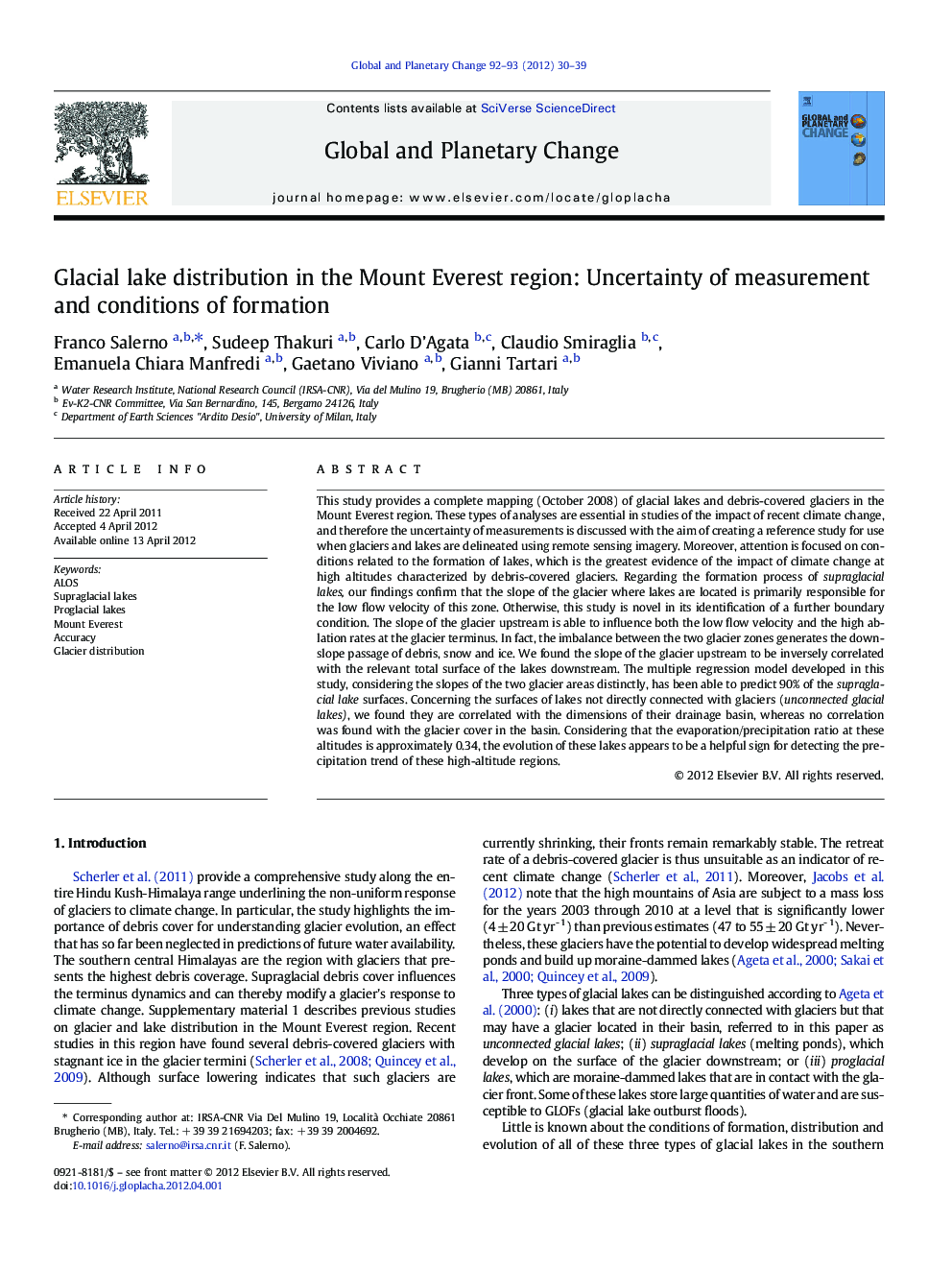| کد مقاله | کد نشریه | سال انتشار | مقاله انگلیسی | نسخه تمام متن |
|---|---|---|---|---|
| 4463628 | 1621685 | 2012 | 10 صفحه PDF | دانلود رایگان |

This study provides a complete mapping (October 2008) of glacial lakes and debris-covered glaciers in the Mount Everest region. These types of analyses are essential in studies of the impact of recent climate change, and therefore the uncertainty of measurements is discussed with the aim of creating a reference study for use when glaciers and lakes are delineated using remote sensing imagery. Moreover, attention is focused on conditions related to the formation of lakes, which is the greatest evidence of the impact of climate change at high altitudes characterized by debris-covered glaciers. Regarding the formation process of supraglacial lakes, our findings confirm that the slope of the glacier where lakes are located is primarily responsible for the low flow velocity of this zone. Otherwise, this study is novel in its identification of a further boundary condition. The slope of the glacier upstream is able to influence both the low flow velocity and the high ablation rates at the glacier terminus. In fact, the imbalance between the two glacier zones generates the down-slope passage of debris, snow and ice. We found the slope of the glacier upstream to be inversely correlated with the relevant total surface of the lakes downstream. The multiple regression model developed in this study, considering the slopes of the two glacier areas distinctly, has been able to predict 90% of the supraglacial lake surfaces. Concerning the surfaces of lakes not directly connected with glaciers (unconnected glacial lakes), we found they are correlated with the dimensions of their drainage basin, whereas no correlation was found with the glacier cover in the basin. Considering that the evaporation/precipitation ratio at these altitudes is approximately 0.34, the evolution of these lakes appears to be a helpful sign for detecting the precipitation trend of these high-altitude regions.
► The glacier slopes upstream and downstream are able to predict 90% of the supraglacial lake surfaces.
► The evolution of lakes not directly connected with glaciers can be used as an helpful sign of the precipitation trend.
► The uncertainty of measurement when satellite imagery is used for mapping glacial lakes and glaciers is assessed in this study.
Journal: Global and Planetary Change - Volumes 92–93, July 2012, Pages 30–39